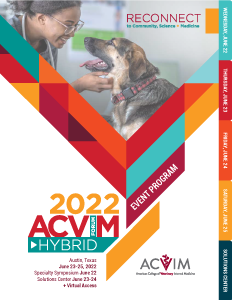To Earn CE for this Session: Watch the on-demand recording in its entirety to unlock the CE quiz. Then click here to complete the CE quiz for this session.
SS – Scientific Session
Oncology
Spay and Neuter: A Surgeon and Oncologist Perspective

Robert McCarthy, DACVS
Clinical Associate Professor
Tufts Cummings School of Veterinary Medicine
North Grafton, Massachusetts, United States
Annette Smith, DVM, MS, DACVIM (SAIM & Oncology)
Professor Emerita
Auburn University
Auburn, Alabama, United States
Primary Presenter(s)
Co-Presenter(s)
Elective gonadectomy of dogs is by far the most commonly performed surgical procedure both in the United States and worldwide. Many beneficial effects have been attributed to this procedure, including improved population control, elimination of certain reproductive disorders and decreased risk of mammary gland tumors. Pet overpopulation remains a significant problem in many areas, and sterilization is sometimes mandated by law. Unfortunately, numerous recent studies suggest that many negative sequelae are associated with loss of gonadal hormones. Multiple other tumors, including osteosarcoma, hemangiosarcoma, mast cell tumor, lymphosarcoma, prostatic carcinoma and bladder/urethral carcinoma are reported with increased frequency in gonadectomized animals. Obesity, orthopedic diseases, endocrine disorders, immune conditions and behavioral problems have also been associated with loss of reproductive hormones.
Because of these issues, many aspects of elective sterilization have been reconsidered and alternatives investigated. Hormone-sparing methods of sterilization such as vasectomy and hysterectomy (ovary sparing spay, OSS) are being requested and performed with increasing frequency. While the great majority of small animal practitioners recognize that there is ongoing debate on this issue, they have rarely been provided with sufficient data to provide useful advice to their clients.
The purpose of this lecture is to provide the most up to date information available on the association between gonadal hormones and cancer. The methods of vasectomy and hysterectomy will be described in detail to provide the oncologist and general practitioner understanding of the unique attributes and potential negative sequelae of these procedures.
Learning Objectives:
- Identify cancer types that may be at increased incidence due to early gonadectomy..
- Identify dog breeds that may benefit from later gonadectomy due to changing cancer risks.
- Understand how vasectomy and hysterectomy are performed, as well as recognize their unique attributes and potential negative sequelae.

